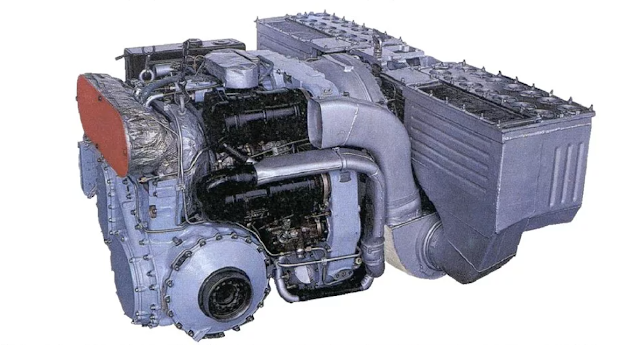Component failure rates for T-72 and T-80 AFVs
Component failure in Soviet armoured fighting vehicles (AFVs) and infantry fighting vehicles (IFVs) is a common occurrence. The failure rate of components depends on factors such as quality, durability, service longevity, and serviceability. This variable can also be affected by poor repairability potential and a lack of automated diagnostic systems to monitor vehicle status.
The failure rate of components is determined by the number
of failures that occur within a specified operating range. For Soviet vehicles,
this operating range is measured in thousands of kilometres. Therefore, the
failure rate can be expressed as the number of operational failures per 1000 kilometres
[<i> Failure rate] = Operating Failure/1000km).
Another important aspect is commonly occurring failure
(COF). COF refers to parts within a module or an entire module that are prone
to common failures. These failures require significant attention and resources
for maintenance and repair.
The following set of data represents vehicles from the 1980s and 1990s; it does not include modernized AFVs like T-80BVM, T-90, T-72B3, T-90M and other modernizations.
The generalized vehicles that fall under the category of analyzed vehicles are T-72A/B and T-80B/BV/U respectively.
Generalized failure rate among components between T-72 and T-80 tanks
|
Functional component group |
T-72 |
T-80 |
||
|
Amount of COF |
Percentage
out of total COF |
Amount of COF |
Percentage
out of total COF |
|
|
Engine |
76 |
0,067 |
185 |
0,124 |
|
Transmission |
69 |
0,060 |
149 |
0,100 |
|
Engine
support systems |
83 |
0,077 |
55 |
0,037 |
|
Running gear |
375 |
0,328 |
448 |
0,301 |
|
Weapons |
61 |
0,053 |
128 |
0,086 |
|
Stabilizer |
47 |
0,041 |
82 |
0,055 |
|
Autoloader (AZ
or MZ) |
72 |
0,063 |
139 |
0,093 |
|
Optics |
74 |
0,065 |
107 |
0,072 |
|
General
electrical equipment |
22 |
0,019 |
149 |
0,100 |
|
Life support
systems |
15 |
0,013 |
32 |
0,022 |
|
Special equipment
|
- |
- |
14 |
0,009 |
According to the chart, the running gear module has a high
failure rate, including rubberized roadwheels, support rollers, and track
links. Engines and transmissions also have elevated failure rates, such as
hermetic leaks, fuel line corrosion, fuel injector blocks, and cylinder gasket
failures. The electrical systems, stabilizers, and optics primarily face issues
like corrosion, seal failure, solenoid failure, among others.
Lastly, another important metric for COF is baseline guaranteed failure. This metric is developed by specialized institutions that test vehicles in a controlled environment using qualified personnel. These tests are conducted with facilitated servicing and repair, and appropriate use of oil, fuel, and coolant. Baseline guarantees are generated under near-perfect conditions, which lowers the COF significantly. During trials, various components may be overstressed or under-stressed, creating outliers. Additionally, a critical factor is how and when vehicles are operated in different climates and terrain conditions.
Baseline guarantee failures compared to service usage failures among various T-80 modifications between 1980-1992.
|
Functional component group |
Amount of COF |
Failure rate per/1000km |
||
|
Baseline guarantee
failure |
Service usage
failure |
Baseline guarantee
failure |
Service usage
failure |
|
|
Engine |
6 |
156 |
0,035 |
0,254 |
|
Transmission |
2 |
66 |
0,012 |
0,107 |
|
Engine
support systems |
5 |
159 |
0,029 |
0,259 |
|
Running gear |
42 |
419 |
0,244 |
0,682 |
|
Weapons |
0 |
154 |
0,000 |
0,251 |
|
Autoloader (MZ) |
1 |
125 |
0,006 |
0,204 |
|
Optics |
4 |
234 |
0,023 |
0,382 |
|
General
electrical equipment |
13 |
247 |
0,076 |
0,402 |
|
Life support
systems |
1 |
40 |
0,006 |
0,065 |
|
Special equipment
|
0 |
14 |
0,000 |
0,023 |
|
General failure
among tanks |
74 |
1614 |
0,431 |
2,629 |
In summary, the data sets reveal two key points:
·
Factory-provided baseline guarantee failure
rates are much lower than actual service usage rates for vehicles in
uncontrolled environments.
· The complexity of the T-80 significantly impacts failure rates, especially in engine transmission and running gear, possibly due to poor maintenance or unqualified personnel.
References:
- Защита оборудования и экипажа военных гусеничных машин от механоакустических и климатических воздействий: Монография. — СПб. : Издательство «Лань», 2016





Comments
Post a Comment